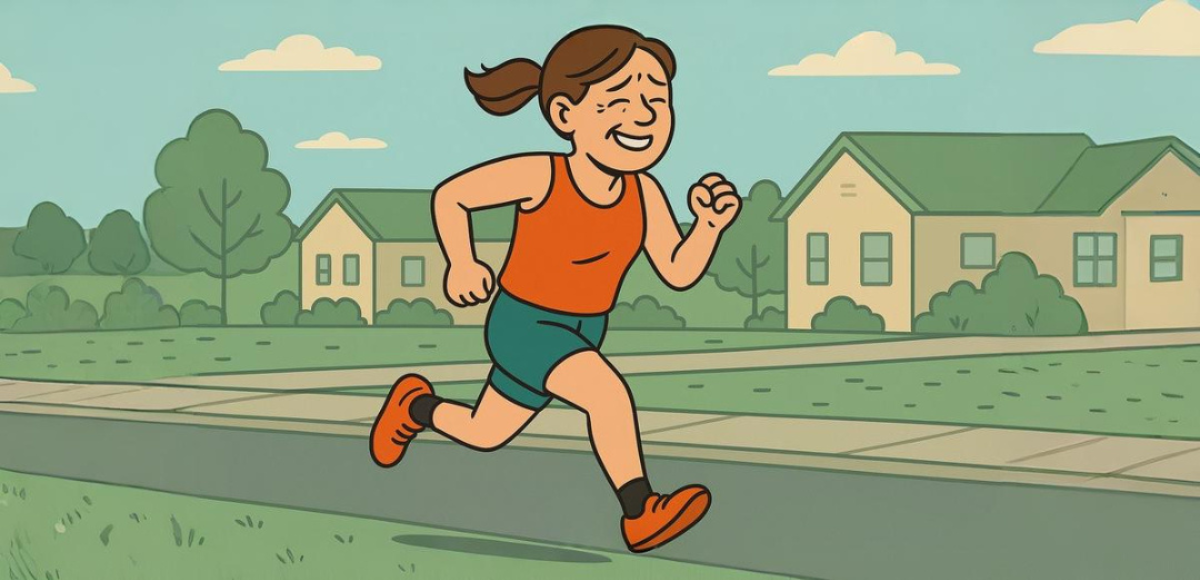Last week, we covered the fine art of doing absolutely nothing and still feeling good about it. In case you missed it, we talked about how to cope with missing runs right here.
But now that you’ve had your existential crisis and your little staring contest with the window like a Jane Austen character moment is over, it’s time to put those shoes back on and face the brutal reality: just plodding along at one steady pace isn’t going to make you faster. Or give you that dramatic race finish where you heroically outkick someone half your age.
Welcome to the world of pace variation. Yes, it’s uncomfortable. No, it’s not fun. But it is effective. And unlike most of your New Year’s resolutions, this one might actually stick.
Alternate Pace Training
It’s easy to settle into that comfy zone on a run, the legs are ticking over, the breathing’s fine, and you’re mentally calculating what’s left in the biscuit tin for when you get home. Lovely stuff.
The problem is, this doesn’t train your body to do anything exciting, like overtaking someone on the home straight instead of just wheezing behind them, wondering why they look so fresh.
Alternate Pace Training is where you strategically inject suffering into your run on purpose. Think of it as speed training’s slightly sadistic cousin.
Try this for size:
- 2 Minutes at Threshold Pace (where you question your life choices)
- 1 Minute Rest (pretend to stretch, but mostly just pray)
- 30 Seconds Flat Out (this is where you try not to cry)
- 3 Minutes Easy Jog (consider quitting running entirely)
- Repeat 5 Times, or until you’ve seen your soul leave your body
It’s not fun. It’s not enjoyable. But it’s absolutely worth it. And think of the smug social media post you’ll earn afterwar
Progressive Pace Runs
Progressive pace runs are like assembling IKEA furniture: start slow, gradually build the intensity, and finish feeling strangely proud of yourself despite the pain and confusion.
The idea is simple: each split gets faster. You’re training your legs and more importantly, your belligerent brain, to keep turning up the dial when everything inside you is screaming to lie down dramatically on the nearest grassy verge.
Sample 5K Progressive Run:
- 1K at 5:40 min/km (warm up, feel smug)
- 2K at 5:30 min/km (this is fine)
- 3K at 5:20 min/km (mild discomfort setting in)
- 4K at 5:10 min/km (what the hell is happening?)
- 5K at 5:00 min/km (final km of sheer regret)
That final km will feel like the dramatic closing scene of a film, except instead of applause, you’ll just get weird looks from a dog walker as you collapse onto a bench.
Interval Training
We saved the best (or worst) til last. Intervals. The training session that separates casual joggers from leather clad sadists.
Our crew swears by the delightfully brutal Walk-Back Intervals (no, really). Here’s how it works:
- Mark out 100m or 200m.
- Sprint it at 80% to full-on “who stole my wallet” speed.
- Walk back. Repeat. Again. And again. And again.
Do this 8, 10, or 12 times depending on how much you enjoy questioning your life decisions. The walk back lets you recover just enough to repeat the madness, and over time, this will turn you into the type of runner who actually has a finishing kick, rather than just an awkward shuffle to the line.
Final Word: From Wistful to Weaponised
So, last week you were gazing out the window like James Joyce. This week, you’re out there, legs on fire, lungs screaming, and wondering why you ever thought this was a good idea.
But trust us, this is the good stuff. The ugly, down and dirty glorious middle part between “thinking about running” and “actually running well.”
Now get out there and give it a lash. And if it all goes horribly wrong, at least you’ll have some cracking stories for the next time you’re back at the window… pretending to stretch.
